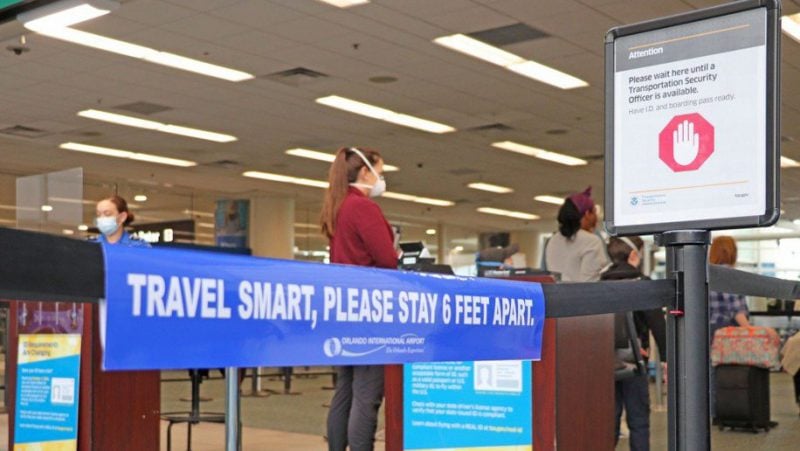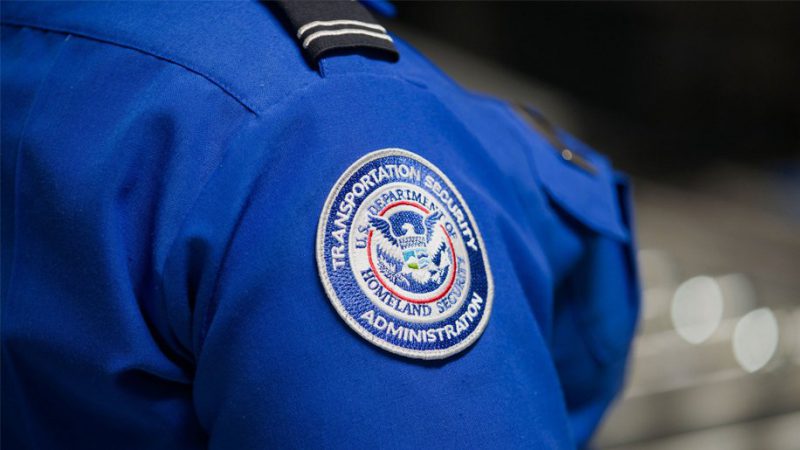TSA Updates Security Screening Procedures
Checkpoint changes aim to prevent the spread of COVID-19, but so far, taking passengers’ temperature is not on the list
May 21, 2020


As a very different summer travel season gets underway, the Transportation Security Administration has announced changes to its security screening procedures in response to the evolving COVID-19 pandemic. TSA said in a statement that some of the changes have already been implemented, with more to be rolled out nationwide by mid-June.
What isn’t on the list is the launch of a program requiring TSA to check passengers for a fever as they go through airport security, first reported in the Wall Street Journal last week.
A fever is one of the most common symptoms of the disease, but how effective so-called ‘fever checks’ are at identifying COVID-19 positive cases is up for debate among experts. The CDC has argued against the idea in administration circles, while the industry trade group Airlines for America has endorsed the idea of having TSA perform the checks as part of security screenings.
However in addition to questions about its efficacy as a diagnostic tool, the procedure may also face legal and operational challenges if the TSA is tasked with the job. Nonetheless fever-checks are in widespread use around the world – including among airlines and airports – as part of a strategy to identify potential COVID-19-positive individuals.

Just not at TSA checkpoints at this time.
The changes that travelers should expect to see, according to TSA, include:
•Boarding Passes: Instead of handing their boarding pass to a TSA officer at the travel document podium, travelers will place the paper or electronic document on the boarding pass reader themselves. After scanning, travelers should hold the boarding pass up so the officer can visually inspect it.
•Food: Passengers should place their carry-on food items into a clear plastic bag and put it in a bin to lessen the chance of triggering an alarm. This process allows social distancing and reduces the need for an officer to touch the passenger’s container of food. TSA Precheck members do not need to remove items from their bags.
•Packing Right: Passengers should take extra care to avoid packing prohibited items, such as liquids, gels or aerosols in quantities greater than 3.4 ounces, in their carry-on bags. In response to COVID-19, TSA is allowing each passenger one container of liquid hand sanitizer up to 12 ounces, but passengers will need to remove the hand sanitizer from the carry-on bag before it goes through X-ray screening.
If a bag contains a prohibited item, passengers may have to go outside of security with their carry-on bags to dispose of the item. Passenger may also be directed back outside of security to remove items that should have originally been taken out of carry-ons, such as laptops, liquids, gels, and aerosols, and large electronics, before going back through screening.
•Social Distancing: Passengers may notice some adjustments leading up to the security checkpoint, including increasing the distance between individuals as they enter the security checkpoint, placing visual reminders on checkpoint floors and staggering the use of lanes where feasible.
•Facial Protection: TSA officers at checkpoints are now using facial protection. Travelers are encouraged to wear face protection through the checkpoint as well. Items such as belts, wallets, keys and phones should be put directly into carry-on bags instead of into the bins to reduce touch-points during the screening process.
Travelers who have not flown since the pandemic are also likely to notice some other changes. They include:
•Reduced security lane usage due to the reduction in passenger volume.
•All TSA officers at checkpoints wearing masks and gloves.
•TSA officers optionally wearing eye protection and clear plastic face shields at some locations.
•TSA officers will continue the practice of changing gloves after each pat-down.
•Plastic shielding installed at many travel document checking podiums, divest, bag search and drop off locations.
•TSA officers practicing social distancing.
•Routine cleaning and disinfecting of frequently touched surfaces in the screening checkpoint area.
Many airlines and airports are also providing specific COVID-19 related guidance to travelers, so TSA is recommending passengers check with individual airlines prior to travel.
“In the interest of TSA frontline workers and traveler health, TSA is committed to making prudent changes to our screening processes to limit physical contact and increase physical distance as much as possible,” said TSA Administrator David Pekoske. “We continue to evaluate our security measures with an eye towards making smart, timely decisions benefiting health and safety, as well as the traveler experience.”




